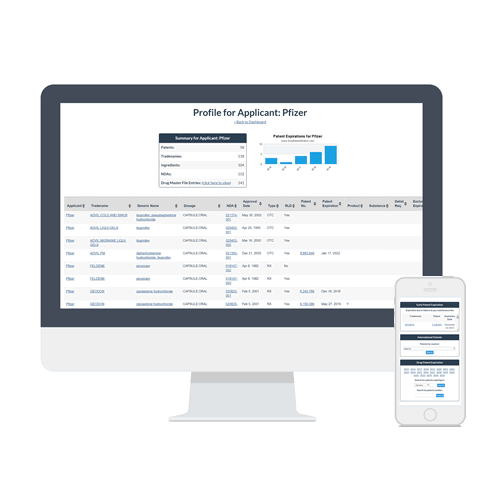Table of Contents
1. Introduction to Pharmaceutical Licensing

In the fast-paced world of pharmaceuticals, innovation is the lifeblood that keeps the industry pumping. But what happens when a company has a groundbreaking drug but lacks the resources to bring it to market? Or when a pharmaceutical giant wants to expand its portfolio without starting from scratch? Enter the world of pharmaceutical licensing agreements – the secret sauce that keeps the industry thriving.
1.1 Definition and Importance
Pharmaceutical licensing agreements are legal contracts that allow one company (the licensor) to grant another company (the licensee) the rights to develop, manufacture, or sell a pharmaceutical product or technology. These agreements are the bridges that connect innovation with commercialization, enabling the industry to deliver life-saving drugs to patients more efficiently.
“Licensing agreements are powerful tools for pharmaceutical companies seeking growth and innovation. Understanding the core components of these agreements is crucial for success in the industry.”[1]
1.2 Key Players in Pharmaceutical Licensing
The pharmaceutical licensing landscape is populated by various players, each with unique roles and motivations:
- Big Pharma: Often licensees, seeking to expand their product portfolios
- Biotech Companies: Usually licensors, looking to monetize their innovations
- Academic Institutions: Frequently licensors of early-stage discoveries
- Contract Research Organizations (CROs): Sometimes involved as third-party developers
2. Types of Pharmaceutical Licensing Agreements
Just as there’s no one-size-fits-all medication, pharmaceutical licensing agreements come in different flavors to suit various needs.
2.1 In-Licensing
In-licensing is like adopting a promising drug candidate into your pharmaceutical family. It’s when a company acquires the rights to develop, manufacture, or market a product or technology from another company.
2.2 Out-Licensing
Out-licensing is the flip side of the coin. It’s when a company grants rights to its product or technology to another company. This is often the route taken by smaller biotech firms or academic institutions that have made a discovery but lack the resources to bring it to market.
2.3 Cross-Licensing
Cross-licensing is like a scientific swap meet. It occurs when two companies exchange rights to their respective technologies. This type of agreement is often used to resolve patent disputes or to combine complementary technologies.
3. Components of Pharmaceutical Licensing Agreements
A pharmaceutical licensing agreement is like a complex recipe – it needs the right ingredients in the right proportions to be successful.
3.1 Intellectual Property Rights
At the heart of any licensing agreement is the intellectual property (IP) being licensed. This could include patents, trademarks, copyrights, or trade secrets. The agreement should clearly define what IP is being licensed and to what extent.
3.2 Financial Terms
Money makes the world go round, and it’s no different in pharmaceutical licensing. Financial terms typically include:
- Upfront payments
- Milestone payments
- Royalties on sales
- Research and development funding
3.3 Territory and Exclusivity
Where can the licensee sell the product? Is it an exclusive or non-exclusive license? These geographical and competitive aspects are crucial components of the agreement.
3.4 Development and Commercialization Responsibilities
Who’s responsible for what? The agreement should clearly outline each party’s responsibilities in terms of further development, regulatory approvals, manufacturing, and marketing.
4. Benefits of Licensing in the Pharmaceutical Industry
Licensing agreements are not just legal documents – they’re strategic tools that can provide significant benefits to both parties.
4.1 For Licensors
For licensors, the benefits can be substantial:
- Monetization of IP
- Access to larger markets
- Risk sharing
- Focus on core competencies
4.2 For Licensees
Licensees also stand to gain:
- Expanded product portfolio
- Access to innovative technologies
- Reduced R&D costs and risks
- Faster time to market
5. Challenges and Considerations in Pharmaceutical Licensing
While licensing agreements offer numerous benefits, they’re not without their challenges.
5.1 Regulatory Compliance
The pharmaceutical industry is heavily regulated, and licensing agreements must navigate this complex landscape. This includes ensuring compliance with FDA regulations, Good Manufacturing Practices (GMP), and other relevant standards.
5.2 Antitrust Concerns
Licensing agreements can sometimes raise antitrust red flags. As noted in the search results:
“Under a long-standing informal interpretation of the Premerger Notification Office (PNO) of the Federal Trade Commission (FTC), an exclusive IP license is viewed as a transfer of assets; thus, it is potentially subject to the premerger reporting requirements of the Hart-Scott-Rodino Antitrust Improvements Act of 1976 (HSR Act), as amended.”[2]
5.3 Risk Management
Licensing agreements involve sharing not just benefits, but also risks. These could include development failures, regulatory setbacks, or market underperformance. Effective risk management strategies should be built into the agreement.
6. Negotiating Pharmaceutical Licensing Agreements
Negotiating a licensing agreement is like a complex chess game – it requires strategy, foresight, and careful consideration of each move.
6.1 Due Diligence
Before entering into a licensing agreement, thorough due diligence is crucial. This involves:
- Assessing the scientific validity of the product or technology
- Evaluating market potential
- Reviewing the IP landscape
- Analyzing regulatory hurdles
6.2 Key Negotiation Points
Some key points to consider during negotiations include:
- Scope of the license
- Financial terms
- Performance obligations
- Termination clauses
- Dispute resolution mechanisms
7. Future Trends in Pharmaceutical Licensing
The pharmaceutical licensing landscape is constantly evolving. Some trends to watch include:
- Increased focus on biologics and gene therapies
- More complex deal structures, including option-based agreements
- Greater emphasis on global rights
- Increased use of artificial intelligence in drug discovery, potentially leading to new licensing models
8. Conclusion
Pharmaceutical licensing agreements are powerful tools that drive innovation and growth in the industry. They allow companies to leverage each other’s strengths, share risks, and bring life-saving drugs to market more efficiently. While navigating the complexities of these agreements can be challenging, the potential benefits make them an indispensable part of the pharmaceutical landscape.
As the industry continues to evolve, so too will licensing agreements. Companies that can master the art of negotiating and managing these agreements will be well-positioned to thrive in the dynamic world of pharmaceuticals.
9. FAQs
- Q: What’s the difference between in-licensing and out-licensing?
A: In-licensing involves acquiring rights to a product or technology from another company, while out-licensing involves granting rights to your own product or technology to another company. - Q: Are all pharmaceutical licensing agreements exclusive?
A: No, licensing agreements can be exclusive or non-exclusive, depending on the terms negotiated between the parties. - Q: How long do pharmaceutical licensing agreements typically last?
A: The duration can vary widely, but many agreements last for the life of the underlying patent or for a fixed term, often 10-20 years. - Q: Can academic institutions participate in pharmaceutical licensing?
A: Yes, academic institutions often license their early-stage discoveries to pharmaceutical or biotech companies for further development and commercialization. - Q: How do royalties work in pharmaceutical licensing agreements?
A: Royalties are typically calculated as a percentage of net sales of the licensed product. The exact percentage and calculation method are negotiated as part of the licensing agreement.
Sources cited:
[1] https://galen-pharma.com/blog/understanding-pharmaceutical-licensing-agreements
[2] https://www.morganlewis.com/services/~/media/files/special-topics/erh_pubs/erh_licensinginthepharmaceuticalindustry_elscdeskbook


